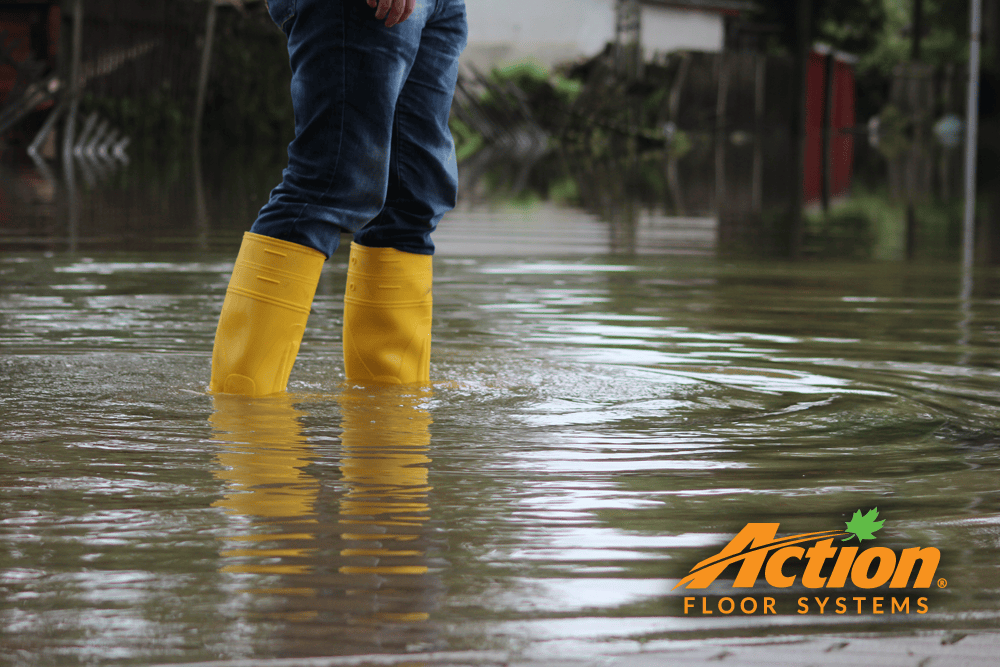 Disasters that damage sports flooring come in numerous shapes and sizes. After Hurricane Harvey hit the Texas Gulf Coast in 2017, many schools in the Houston area faced massive repairs, including the need to replace hardwood courts in gymnasiums.
Disasters that damage sports flooring come in numerous shapes and sizes. After Hurricane Harvey hit the Texas Gulf Coast in 2017, many schools in the Houston area faced massive repairs, including the need to replace hardwood courts in gymnasiums.
Action Floor Systems® dealer and partner Bauer Sports Floors was busy working with schools and insurance adjusters, helping communities get back to normal as soon as possible. Video from a local news report shows just how devastating floodwaters can be to school gymnasiums.
But, it doesn’t always have to be a major storm that causes damage and prompts facility owners to call up their insurance provider. Brent Kelosky of Sports Floors, Inc. in Pittsburgh has seen his fair share of damaged flooring as well.
“We’ve had several different types of water damage incidents in the last year,” he says. “From flooding to broken pipes due to freezing weather and sports-related accidents hitting sprinklers, these instances all resulted in complete floor replacements.”
So, what should school administrators and facility owners do in the event of a hurricane, tornado, flooding or any unforeseen event that warrants sports floor repairs or replacement? Kelosky and Action Floors VP of Sales Ron Fenhaus have some insights and advice.
Step One: Be Prepared
Your school or athletic facility should get prepared for events of different degrees. Leaks in roofs and broken pipes are common problems, but they can lead to significant damage if you fail to address them promptly and appropriately.
“When there’s a pipe break or water leakage of any sort, the question is, how quickly can you isolate it, clean the water off the hardwood flooring and start the drying process?” says Fenhaus.
In those cases, there’s a good chance you’ll be able to save most of the floor.
“If a leak occurs during normal hours of operation, and your maintenance or janitorial staff is there to handle the problem, it could simply be a matter of knowing where the shutoff valve is located and stopping the water flow,” Fenhaus adds. “However, if something happens when the building is closed and no one is around, a leak or burst pipe could easily cause major issues.”
Weather-related damage from natural disasters and severe weather such as hurricanes, tornadoes, flooding and blizzards bring a different set of concerns. For one thing, water from a storm surge will contain a lot more contaminants than the water from a burst pipe.
“That water is coming into the building dark, dirty and full of sediment and microbes,” Fenhaus explains. “Mold is always a concern with water damage, but with storm damage, you have agents in the water that expedite mold growth.”
Because it could be difficult to access the building immediately following a natural disaster, and because it’s more likely the sports floor will be submerged in water, a complete tear out and replacement is usually required.
Fenhaus recommends schools and facility owners follow a few specific steps to be prepared for disaster.
- Review Your Insurance Policy: Do you know what your insurance covers and to what extent? If you’ve made a significant investment in hardwood sports flooring, make sure it’s covered and renew replacement values with your agent regularly. You should also store your policy in a safe place.
- Document Conditions: Fenhaus suggests taking images and videos of your facility’s existing condition at least once a year. You should do the same to document the damage. With that sort of information on hand, it’s much easier to come to a reasonable settlement with the insurance company.
- Prep Your Building: If you know or suspect a disaster is imminent, move items of value and importance to higher ground when practical. If you’ve invested in a portable sports floor, it may be possible to protect it in storage. Otherwise, take steps to keep the storm surge from infiltrating your building or gymnasium.
Step Two: Know Who to Call and What to Do
If your facility is in the path of a major storm, it’s wise to contact your insurance provider ahead of time to make them aware that you could be filing a claim.
Because mold contamination is such a serious concern, Fenhaus says tear out and removal of damaged materials should be a top priority as soon as you can safely access the building. Following major storm damage, your facility needs to be dried out and sanitized before any rebuilding begins.
In the event of extensive damage to your gym, a reliable sports flooring expert will also be valuable to you. Kelosky recommends calling up a contractor as soon as possible to help you assess the damage and suggest next steps.
“Get an MFMA-accredited athletic flooring contractor you trust involved immediately,” he says. “We are the professionals in the industry, and a good flooring contractor will look out for the owner’s best interests.”
Kelosky explains that insurance agents don’t understand the intricacies of floor construction and how water damage can impact spoors flooring. The insurance company may try to salvage the floor by contacting a restoration company first. He’s seen that lead to mistakes costing tens-of-thousands of dollars.
“The restoration companies do not understand the floor systems either and will attempt to dry floors in ways that don’t work,” Kelosky says. “I had a restoration company blowing air under a sleeper system for weeks in the wrong direction. When I was finally brought in, I told the adjuster if I was here two weeks ago the floor might have been saved. I showed him what they were doing, and he was shocked.”
Step Three: Getting Your Facility Back to Normal
Fenhaus says Action Floors dealers often work closely with insurance adjusters to determine pricing for repairs and replacements. A sports flooring expert can also help you and your insurance company accurately assess the damage. Kelosky makes sure to ask plenty of detailed questions when checking out a damaged facility.
“I get a lot of information from these questions that prepares Sports Floors Inc. to help our customers,” he says. “When I arrive, I do a visual assessment of the floor and locate any obvious damage. I then pull a piece of base and look under the floor to see what type of construction we are dealing with. I make recommendations to help dry the floor if that is an option, and if not, I recommend the areas that need to be removed to begin repairs.”
If the damage requires a new hardwood court, insurance adjusters will try to replace sports floors with like-kind systems.
“The goal is to put in the same quality floor that was there beforehand,” Fenhaus says. “In some cases, though, facilities have upgraded their sports floor system by offering to pay the difference between the like-kind system and what they really want. Insurance adjusters typically don’t have any issues with that as long as they aren’t the ones paying for the upgrade.”
If your school or athletic facility is in an area prone to flooding, installing a synthetic sports floor system, such as those in the Action Herculan product line, is a good option.
“If it is installed and sealed properly, a synthetic sports floor in a K-12 gymnasium will have a better chance of surviving water and storm damage,” Fenhaus says.
While the performance attributes and aesthetics are different than hardwood maple sports floor systems, options including Action Herculan PE, Action Herculan ME and Action Herculan MF offer shock absorption for athletes along with durability and some water resistance.
At Action Floors, we understand that a school gymnasium serves many purposes and can unite a community around its youth. Getting your gym back in operation following a disaster is important. If you need help identifying an accredited sports flooring expert in your area, contact us by email or call 800-746-3512.

























